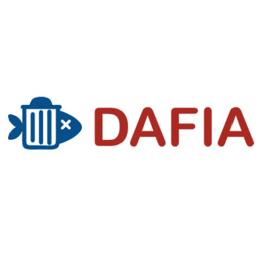Biomacromolecules from bio-waste fractions for high added value applications
The main objective of DAFIA is to exploit the organic fraction of municipal solid wastes (MSW) and marine rest raw materials (MRRM) as feedstocks for higher value products. Municipal solids wastes represents more than 500 kg/capita (EU-27 average) and 300 million tonnes overall every year in the EU-32. Currently, approximately 50% of this volume is landfilled, while the rest is incinerated for energy production.
More than 1.3 million tonnes of marine rest raw materials (MRRM) are generated in Europe each year. Some countries, such as Norway and Denmark, are utilising a high fraction of the MRRM, mainly as animal feed. However, some parts are underutilised and will the targeted feedstocks in DAFIA.

The parallel exploitation of the two feedstocks is expected to create synergies, for instance by transfer of knowledge in processing and fractionation from MRRM- to MSW-handling, and by utilisation of MRRM-fractions as nutrients in fermentations based on MSW.
The targeted products are chemical building blocks (2 dicarboxylic acids and a diamine) for further conversion to polyamides and polyesters, flame-retardants and edible/barrier coatings. New microbial strains and processes for conversion of major feedstock fractions, as well as enzymatic and chemical modifications of components isolated from the feedstock or produced in microbial processes, will be developed. Up to four products, at least one from each of the two value-chains (MSW & MRRM), will be selected based on the potential commercial value and the technical feasibility, and evaluated at pilot scale to reach technology readiness level (TRL) 5.
ACTIVITIES of Bio Base Europe Pilot Plant
- Downstream process development for the recovery of diamines from a fermentation broth.
- Validation and optimization of the most promising fermentation process at 1500L scale and downstream processing.
PARTNERS
- AIMPLAS – Asociacion de Investigacion de Materiales Plasticos y Conexas, ES (coordinator)
- Politecnico di Torino, IT
- SINTEF Fiskeri og Havbruk (Ocean) AS, NO
- STIFTELSEN SINTEF, NO
- Danmarks Tekniske Universitet, DK
- Centre National de la Recherche Scientifique CNRS, FR
- Nutrimar AS, NO
- Innovacio i Recerca Industrial i Sostenible SL, ES
- Biotrend – Inovacao e Engenharia em Biotecnologia SA, PT
- Daren Laboratories & Scientific Consultants ltd., IL
- Mine Plastik Endustriyel Urunler ve Sert Maden Kimya Limited Sirketi, TR
- Bio Base Europe Pilot Plant, BE
- Biopolis SL, ES
- Arkema France, FR
- The National Non-Food Crops Centre, UK
SUPPORTED by:
This project has received funding from the European Union’s Horizon 2020 research and innovation programme under GA No. 720770.



 webdesign
webdesign